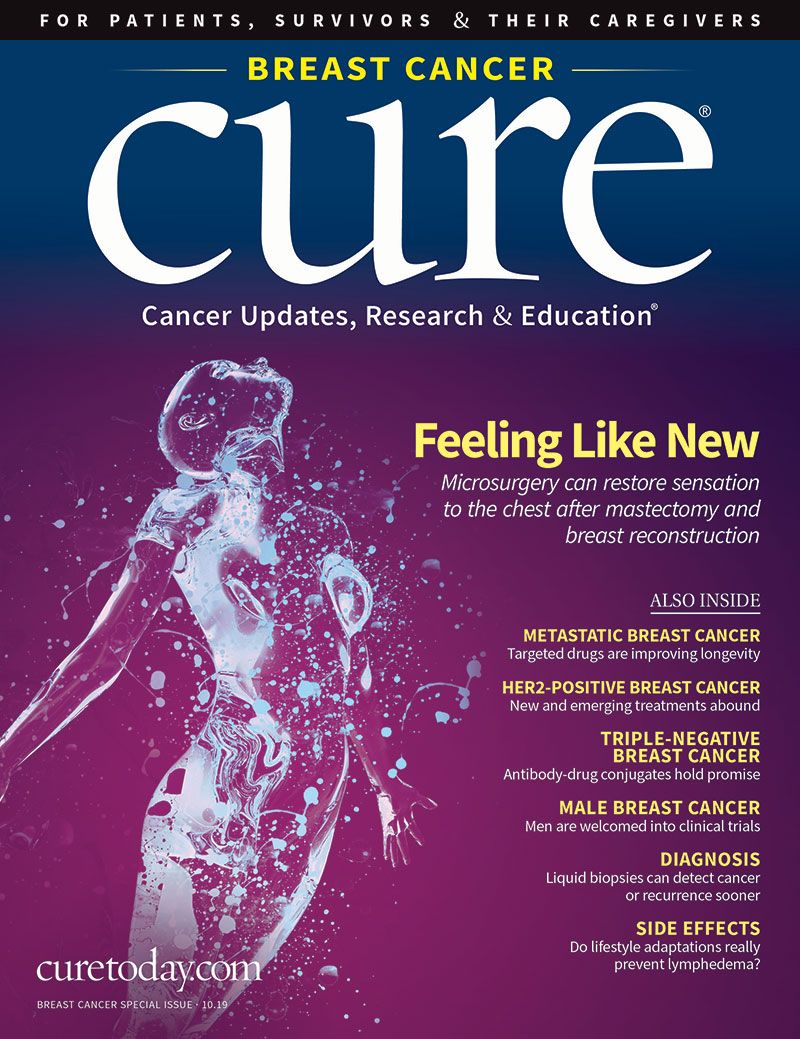Publication
Article
CURE
Microsurgery During Breast Reconstruction Can Restore Feeling to the Chest After Mastectomy
Author(s):
We hope this issue helps answer your questions about treatments and side effects, leaving you better informed and more confident as you make decisions about your care.
Of the American women who undergo mastectomy due to breast cancer or a predisposition to it, the majority choose implants rather than reconstructive surgery that transplants tissue harvested from elsewhere on the body.
But due to recent developments in the breast cancer arena, there’s more than one reason women may consider tissue-based reconstruction. One is that breast implants have been associated with the development of an autoimmune syndrome and a rare new kind of lymphoma. CURE ® delved into these concerns in the cover story of the 2019 special issue on rare cancers.
Another is that tissue-based reconstruction lends itself to a new type of microsurgery that can restore sensation to the chest after mastectomy. Not only can this greatly improve quality of life, but it also represents a big change compared with standard mastectomy and reconstruction practices, which leave most women with little or no feeling in the area.
“Patients often tell me that they unknowingly bump their chest against objects while working because of a lack of proprioception (ability to sense objects in space),” one doctor told CURE ®. “There are patients whose skin has been burned while ironing clothes because they couldn’t feel the heat of the iron.”
In a feature article in this special issue, we describe the techniques that connect nerves in transplanted tissue to those in the area being reconstructed, bringing sensation back. We also discuss where patients can find doctors who do these procedures.
Throughout these pages, we address a number of other important issues affecting people with breast cancer. One feature gives in-depth information about the latest treatments for metastatic breast cancer, and another examines new and emerging treatments for HER2-positive disease. A third article discusses an experimental drug that may be approved as a treatment for triple-negative breast cancer: the antibody-drug conjugate sacituzumab govitecan (IMMU-132).
This issue also shares news of a topical form of the hormone- blocking drug tamoxifen, which — if it meets its goals in clinical trials — could become a new way to prevent hormone-driven breast cancer in women who face a high risk. In the diagnosis realm, we explore the potential of liquid biopsies that look for traces of tumor DNA in the blood.
Rounding out our lineup: insights into lymphedema avoidance for patients at risk of developing the side effect, which causes fluid to pool in areas of the body from which lymph nodes were removed.
We hope this issue helps answer your questions about treatments and side effects, leaving you better informed and more confident as you make decisions about your care. As always, thank you for reading.





